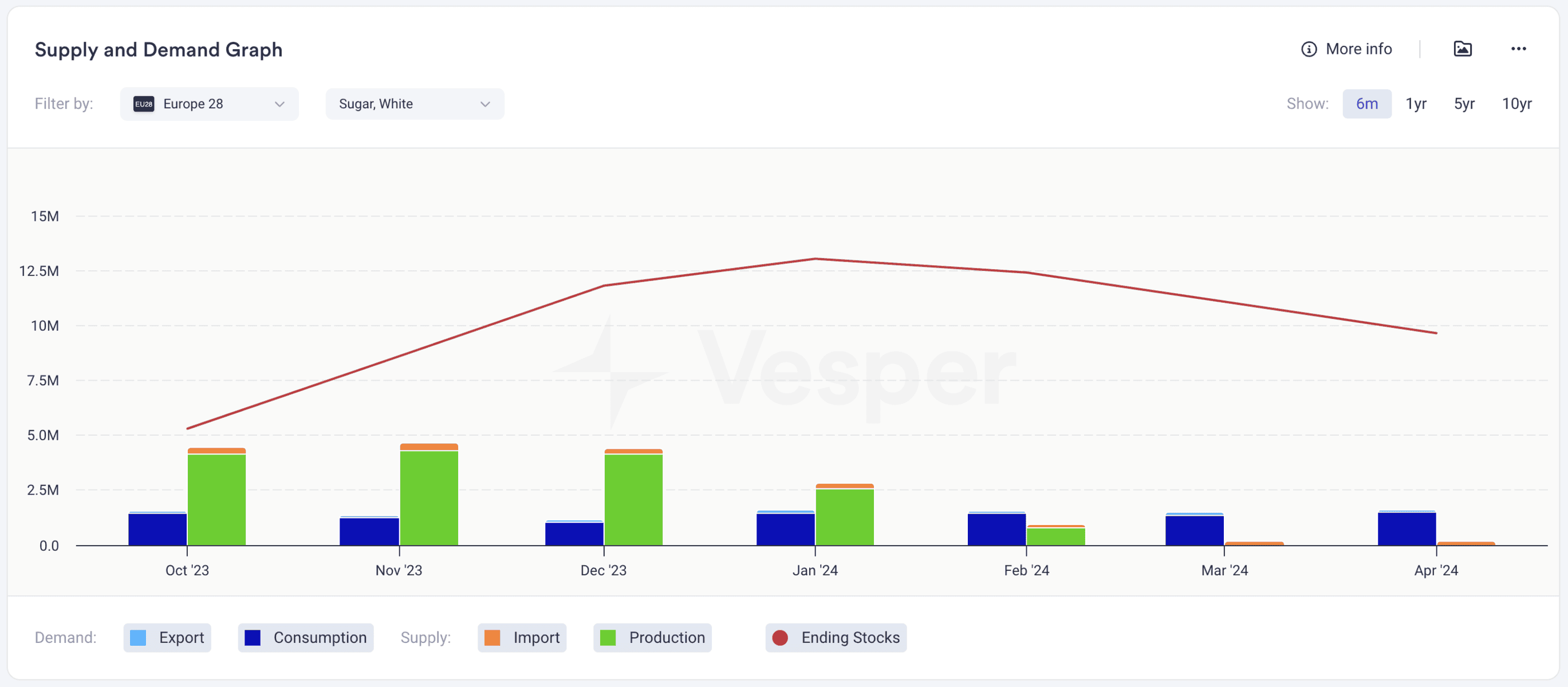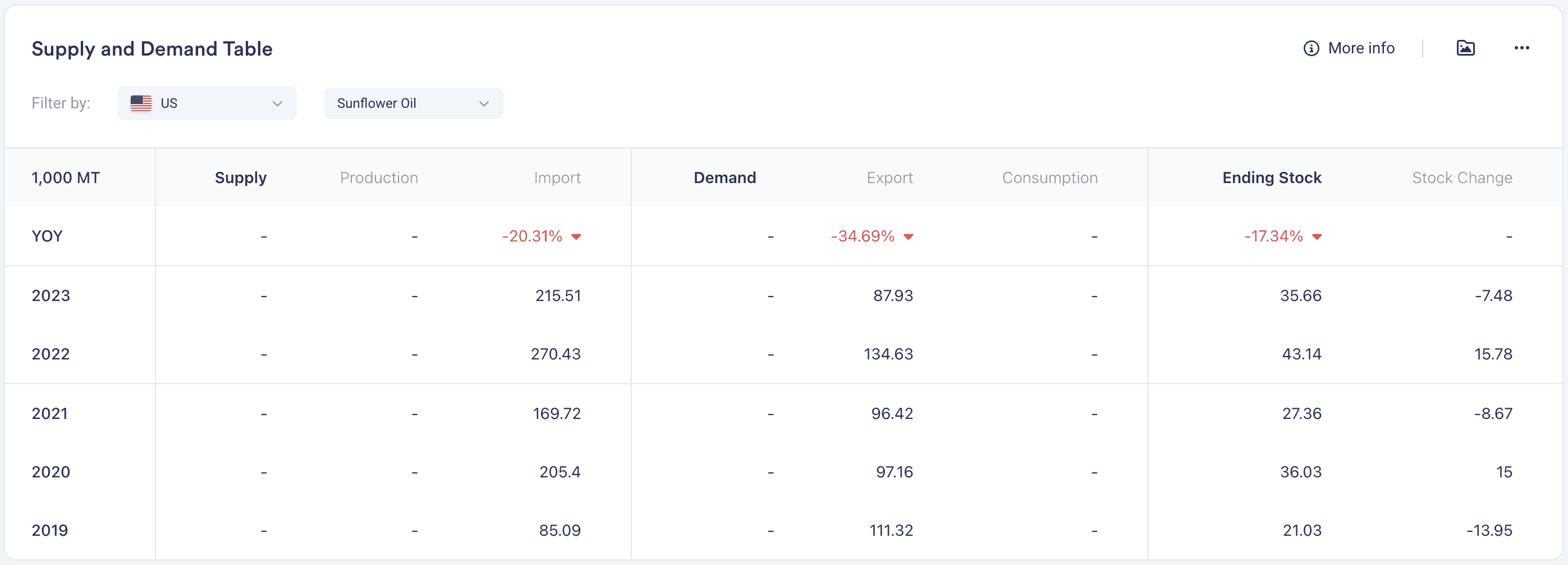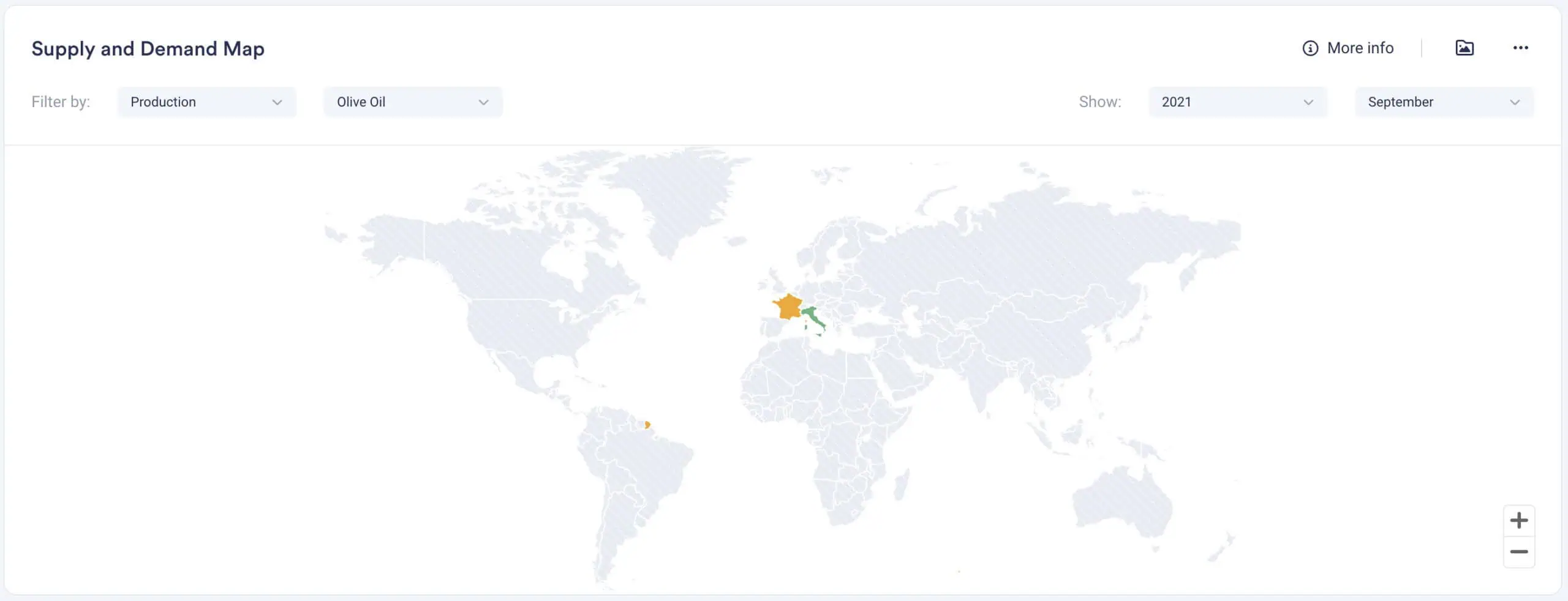Market Dynamics and Trends
Understanding supply and demand dynamics provides a clear picture of market trends. By analysing how supply and demand interact, users can predict price movements and market behaviour, allowing for more informed and strategic decisions.
Strategic Sourcing and Procurement
Supply and demand data support strategic sourcing and procurement decisions. By knowing which commodities are in high demand or short supply, procurement teams can negotiate better deals and secure reliable sources, reducing risks and costs.
Market Competitiveness
Understanding supply and demand helps businesses stay competitive. By keeping an eye on market shifts and consumer demand, companies can adapt their strategies, optimise their product offerings, and maintain a strong market position.
Get Started with Commodity Supply and Demand Widgets: Step-by-Step
1. Commodity Supply and Demand Graph Widget
This graph displays the monthly supply and demand of the selected product per country.
- Demand is made up of Export and Consumption
- Supply is made up of Import and Production
- Ending Stocks is the availability of the product
Use the time filter on the right-hand side to view different time periods:
- 6 months
- 1 year
- 5 years
- 10 years
As some of this data is not available, we make our own calculations to provide you with these insights:
- EU countries: Consumption and Ending Stocks are not published for the individual EU countries. For these countries, we use Disappearance with the following formula: Disappearance = Production + Import – Export
- EU-28: As Consumption and Ending Stocks are not published for the EU-28, Vesper has created its own Consumption calculation. From this calculation, we are able to publish the Ending Stocks. The method we use is to calculate the consumption as a share of the Disappearance. The Disappearance in a certain month consists of both Stock Change and Consumption.
- EU-28 stock level estimates: The Vesper team estimates the monthly butter, SMP, and cheese stocks in Europe 28 using machine learning-based forecasting models. This means that, on average, the latest two to three stock-level values for EU28 butter, SMP, and cheese are preliminary.


